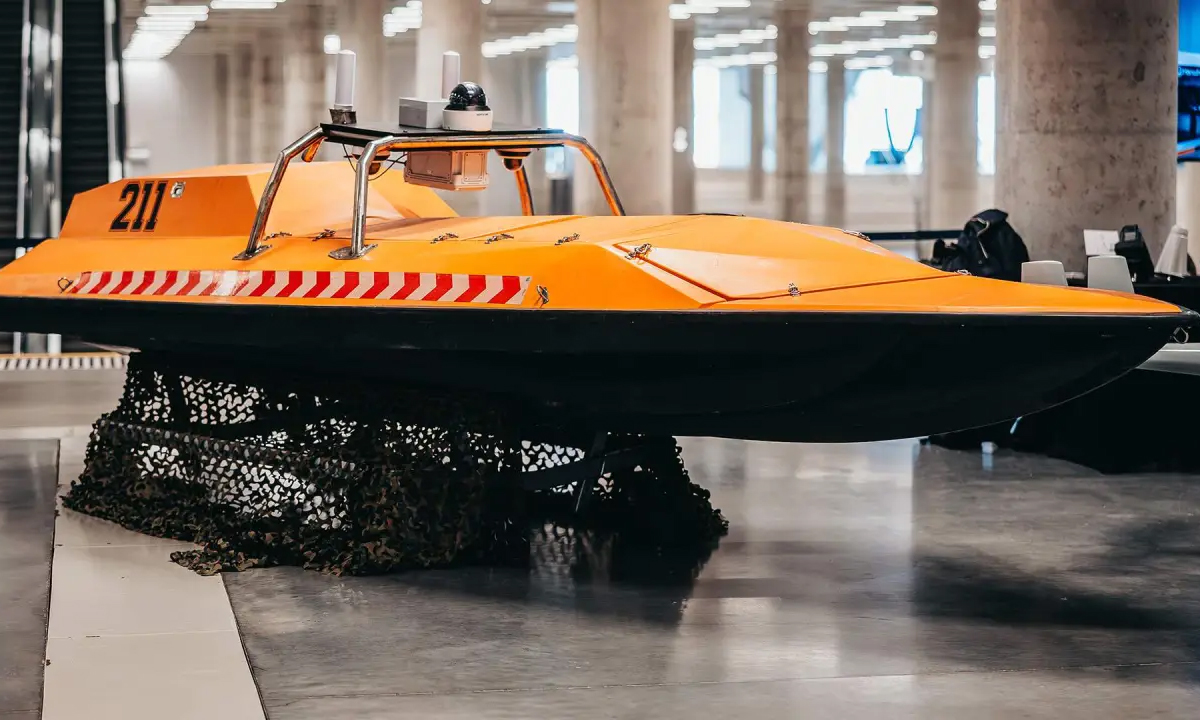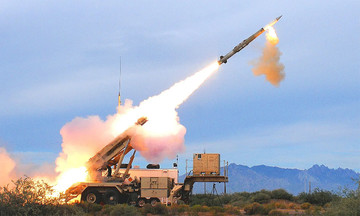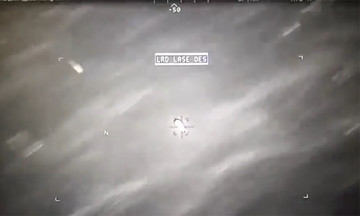At the Dronnitsa-2025 event held in Novgorod, Russia on 9/9, a company called the Ushkuynik Research and Production Center introduced its fiber-optic controlled USV.
"The Black Sea Fleet has received a prototype fiber-optic USV for evaluation under real-world conditions. Combat tests are scheduled for September. The vehicle can perform various tasks such as suicide attacks, countering Ukrainian USVs, or acting as a mothership for launching drones," said Alexey Chadayev, general director of Ushkuynik.
Ushkuynik's USV utilizes a fiber-optic cable with a specialized protective covering. The cable is relatively heavy and will sink to the seabed after deployment. The cable spool is likely reinforced with high-strength material.
 |
A USV model made by Russia. Photo: TopWar |
A USV model made by Russia. Photo: TopWar
When operating as a mothership, Ushkuynik's USV will carry drones in its internal compartment and be equipped with an antenna to control them via radio waves. The fiber-optic cable ensures a stable connection, enabling the operator to pilot the drones to strike enemy targets.
Lacking large naval vessels, the Ukrainian navy has focused on investing in USVs to attack Russian warships and other targets. Ukraine is also the first country in the world to establish a military branch dedicated to operating drones.
After initially lagging behind, Russia has also been developing USVs and has begun using them to attack various targets. The first successful attack occurred on 28/8, when a Russian high-speed USV struck the Ukrainian navy's Simferopol reconnaissance ship on the Danube River.
Russian USV attacks Ukrainian reconnaissance ship Simferopol on 28/8. Video: Russian Ministry of Defense
Fiber-optic connected drones provide more stable and higher-quality image transmission compared to wireless connections, increasing accuracy and effectiveness in targeting. The fiber-optic connection also makes FPV (first-person view) drones immune to electronic countermeasures, which significantly limit the operational capabilities of wirelessly connected drones.
However, this method limits the drone's maneuverability due to the risk of tangled cables or obstructions. The operational range is also restricted by the length of the fiber-optic cable.
Fiber-optic controlled USVs can also face similar challenges, as currents, debris, and other objects can tangle the cable. However, this risk is offset by the advantages of fiber optics, such as clearer video and resistance to interference.
Nguyen Tien (According to TASS, AP, AFP)












